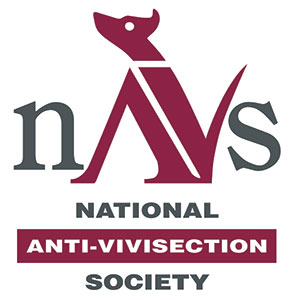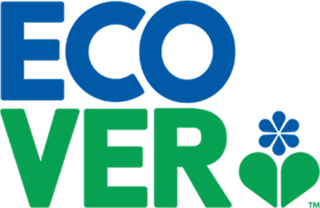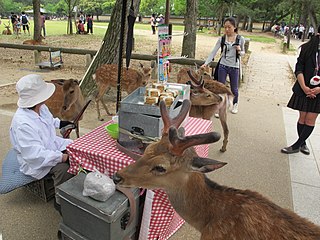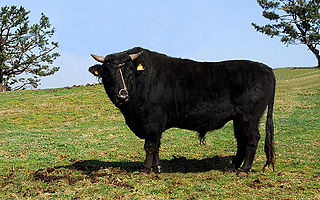
Animal testing, also known as animal experimentation, animal research, and in vivo testing, is the use of non-human animals in experiments that seek to control the variables that affect the behavior or biological system under study. This approach can be contrasted with field studies in which animals are observed in their natural environments or habitats. Experimental research with animals is usually conducted in universities, medical schools, pharmaceutical companies, defense establishments, and commercial facilities that provide animal-testing services to the industry. The focus of animal testing varies on a continuum from pure research, focusing on developing fundamental knowledge of an organism, to applied research, which may focus on answering some questions of great practical importance, such as finding a cure for a disease. Examples of applied research include testing disease treatments, breeding, defense research, and toxicology, including cosmetics testing. In education, animal testing is sometimes a component of biology or psychology courses. The practice is regulated to varying degrees in different countries.
The Draize test is an acute toxicity test devised in 1944 by Food and Drug Administration (FDA) toxicologists John H. Draize and Jacob M. Spines. Initially used for testing cosmetics, the procedure involves applying 0.5 mL or 0.5 g of a test substance to the eye or skin of a restrained, conscious animal, and then leaving it for set amount of time before rinsing it out and recording its effects. The animals are observed for up to 14 days for signs of erythema and edema in the skin test, and redness, swelling, discharge, ulceration, hemorrhaging, cloudiness, or blindness in the tested eye. The test subject is commonly an albino rabbit, though other species are used too, including dogs. The animals are euthanized after testing if the test renders irreversible damage to the eye or skin. Animals may be re-used for testing purposes if the product tested causes no permanent damage. Animals are typically reused after a "wash out" period during which all traces of the tested product are allowed to disperse from the test site.
Cruelty Free International is a British animal protection and advocacy group that campaigns for the abolition of all animal experiments. They organise certification of cruelty-free products which are marked with the symbol of a leaping bunny.

Animal Aid is a British animal rights organisation, founded in 1977 by Jean Pink. The group campaigns peacefully against the consumption of animals as food and against animal cruelty such as their use for medical research—and promotes a cruelty-free lifestyle. It also investigates and exposes animal abuse.
Gillian Rose Langley is a British scientist and writer who specialises in alternatives to animal testing and animal rights. She was, from 1981 until 2009, the science director of the Dr Hadwen Trust for Humane Research, a medical research charity developing non-animal research techniques. She was an anti-vivisection member of the British government's Animal Procedures Committee for eight years, and has worked as a consultant on non-animal techniques for the European Commission, and for animal protection organizations in Europe and the United States. Between 2010 and 2016 she was a consultant for Humane Society International.

The National Anti-Vivisection Society (NAVS) is an international not-for-profit animal protection group, based in London, working to end animal testing, and focused on the replacement of animals in research with advanced, scientific techniques. Since 2006, the NAVS has operated its international campaigns under the working name Animal Defenders International (ADI), and the two groups now work together under the ADI name.

Alternatives to animal testing are the development and implementation of test methods that avoid the use of live animals.

Ecover is a Belgian company that manufactures ecologically sound cleaning products, owned by S. C. Johnson & Son since 2017.

Cosmetic testing on animals is a type of animal testing used to test the safety and hypoallergenic properties of cosmetic products for use by humans.

The American Anti-Vivisection Society (AAVS) is a Jenkintown, Pennsylvania-based organization created with the goal of eliminating a number of different procedures done by medical and cosmetic groups in relation to animal cruelty in the United States. It seeks to help the betterment of animal life and human-animal interaction through legislation reform. It was the first anti-vivisection organization founded in the United States.
Beauty Without Cruelty (BWC) is an animal issues charity in South Africa, established in 1975. Its initial focus was animal testing, fur and ivory. It has subsequently expanded to include educating and offering kind options in all areas of animal exploitation. Beauty Without Cruelty is an animal rights organisation with a primary objective to educate and inform the public about the exploitation, abuse and suffering of all animals and to offer humane, non-animal alternatives, to replace cruel and harmful lifestyle choices. They receive no government or lottery funding and rely entirely on the generosity of supporters to continue work for animals. Beauty Without Cruelty means living without cruelty.
The New England Anti-Vivisection Society (NEAVS) is a national, registered 501(c)(3) nonprofit organization "dedicated to ending the use of animals in research, testing, and science education" and replacing them with "modern alternatives that are ethically, humanely, and scientifically superior."

The cosmetic industry describes the industry that manufactures and distributes cosmetic products. These include colour cosmetics, like foundation and mascara, skincare such as moisturisers and cleansers, haircare such as shampoos, conditioners and hair colours, and toiletries such as bubble bath and soap. The manufacturing industry is dominated by a small number of multinational corporations that originated in the early 20th century, but the distribution and sale of cosmetics is spread among a wide range of different businesses. Cosmetics must be safe when customers use them in accordance with the label's instructions or in the conventional or expected manner. One measure a producer may take to guarantee the safety of a cosmetic product is product testing. FDA occasionally does testing as part of its research program or when looking into potential safety issues with a product. Both the cosmetics business and consumers can benefit from the FDA's resources on product testing.
Animal welfare in the United States relates to the treatment of non-human animals in fields such as agriculture, hunting, medical testing and the domestic ownership of animals. It is distinct from animal conservation.

Japan has implemented several national animal welfare laws since 1973, but its protections for animals are considered weak by international standards. Animal activism and protection laws in Japan are mainly focused on the welfare of domesticated animals and farm animals.

Animal welfare and rights in South Korea is about the laws concerning and treatment of non-human animals in South Korea. South Korea's animal welfare laws are weak by international standards. There are a handful of animal welfare and rights organizations working in South Korea, which appear to be focused largely on the welfare of companion animals and the dog meat trade.
Animal welfare and rights in South Africa is about the treatment of and laws concerning non-human animals in South Africa.
Animal welfare and rights in Switzerland is about the treatment of and laws concerning non-human animals in Switzerland. Switzerland has high levels of animal welfare protection by international standards.
Animal products in pharmaceuticals play a role as both active and inactive ingredients, the latter including binders, carriers, stabilizers, fillers, and colorants. Animals and their products may also be used in pharmaceutical production without being included in the product itself.










